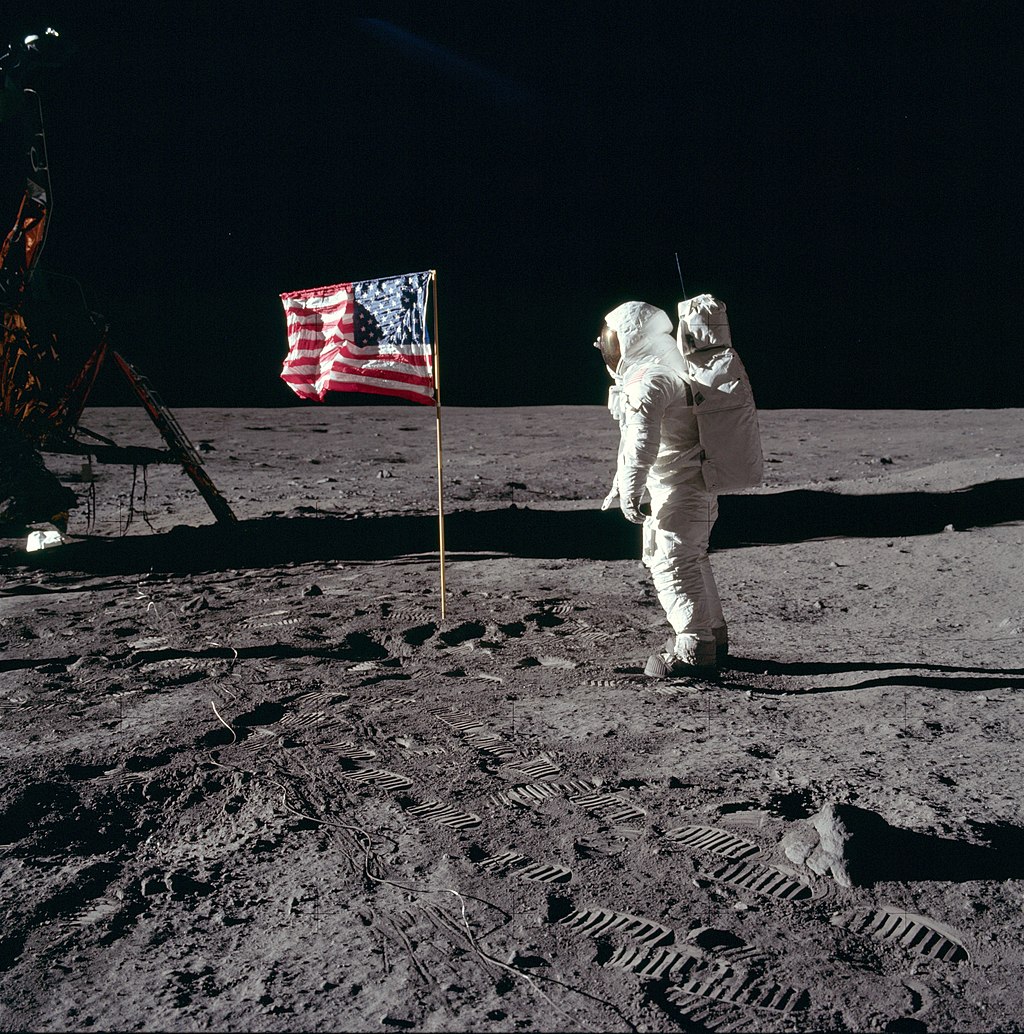It consists of thirteen equal horizontal stripes of red (top and bottom) alternating with white, with a blue rectangle in the canton bearing fifty small, white, five-pointed starts arranged in nine offset horizontal rows, where rows of six stars (top and bottom) alternate with rows of five stars. The proportion of the flag is 10:19.

The 50 stars on the flag represent 50 states of the country and the 13 stripes represent the 13 British colonies that declared independence from the Kingdom of Great Britain. These colonies became the first states in the United States.
The flag of the US is sometimes called "The Stars and Stripes", "Old Glory", "The Star-Spangled Banner", "Red, White and Blue".
The actual design of the flag is its 27th, so it has been officially modified 26 times since 1777. The flag with 48 stars was in effect for 47 years until the 49-star version became official on July 4, 1959. On August 21, 1959 former president Dwight Eisenhower ordered the flag with 50 stars on it and it was adopted in July 1960. It is the longest-used version of the U.S. flag - it has been in use for over 56 years.
The first flag was called the Grand Union Flag or Continental Colors and looked like that:

At the time of the Declaration of Independence in July 1776, the Continental Congress would not legally adopt flags with "stars, white in a blue field" for another year. The flag earlier known as "the Continental Colors" has historically been referred to as the first national flag.
On June 14, 1777, the Second Continental Congress passed the Flag Resolution which stated: "Resolved, That the flag of the thirteen United States be thirteen stripes, alternate red and white; that the union be thirteen stars, white in a blue field, representing a new constellation." The flag looked like that:
The first official U.S. flag flown during battle was on August 3, 1777, at Fort Schuyler during the Siege of Fort Stanwix. Francis Hopkinson, a naval flag designer, and a signer of the Declaration of Independence, designed the 1777 flag while he was the Chairman of the Continental Navy Board's Middle Department.
The modern meaning of the flag was forged in December 1860, when Major Robert Anderson moved the U.S. garrison from Fort Moultrie to Fort Sumter in Charleston Harbor. Author Adam Goodheart argues this was the opening move of the American Civil War, and the flag was used throughout northern states to symbolize American nationalism and rejection of secessionism.
Nowadays the flag of the United States is one of the nation's most widely recognized symbols. It can be seen not only on public buildings but also on private residences. The flag is also a common motif on clothing, e.g. on badges and lapel pins.

The U.S. flag is proudly flown on many occasions, it is often treated as a symbol of Americanism. What is interesting is the fact that desecration of the flag is considered a public outrage, but remains protected as freedom of speech.
Astronaut Buzz Aldrin salutes the US flag on the moon during the Apollo 11 mission.

US flag on Mars (Curiosity Rover, September 19, 2012.
There are numerous rules connected to the display of the flag on buildings, suits, vehicles, postage stamps etc. - it is called flag etiquette.

US flag on Neil Armstrong's space suit
Traditionally, the flag of the United States plays a role in military funerals, and occasionally in funerals of other civil servants (such as law enforcement officers, fire fighters, and U.S. presidents). A burial flag is draped over the deceased's casket as a pall during services. Just prior to the casket being lowered into the ground, the flag is ceremonially folded and presented to the deceased's next of kin as a token of respect.

Task: try to collect information about your national flag and write a description of it - how it looks like, what is its history and rules.



No comments:
Post a Comment